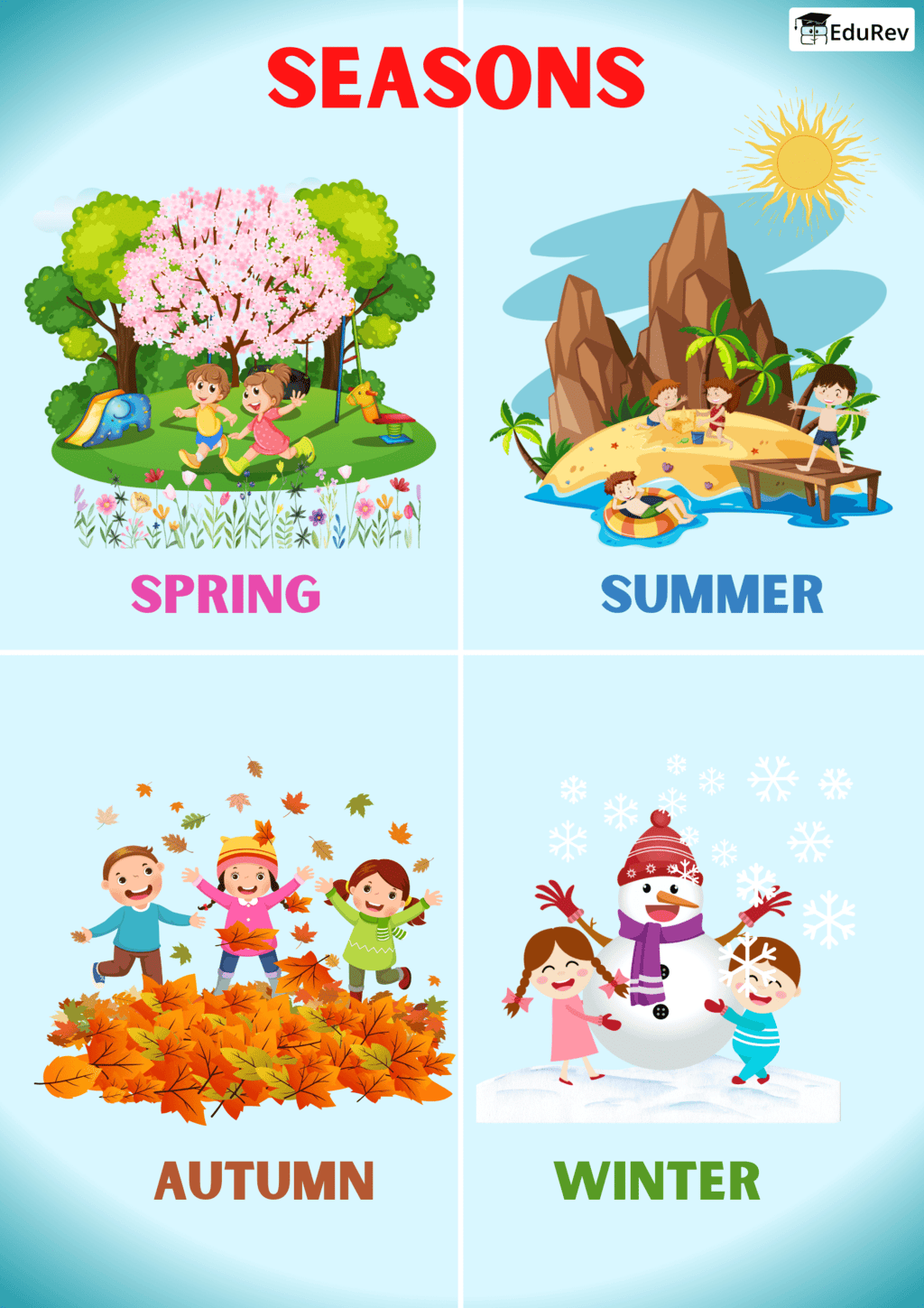Class 2 Exam > Class 2 Notes > EVS for Class 2 > Poster: Seasons
Poster: Seasons | EVS for Class 2 PDF Download

The document Poster: Seasons | EVS for Class 2 is a part of the Class 2 Course EVS for Class 2.
All you need of Class 2 at this link: Class 2
|
30 videos|243 docs|48 tests
|
FAQs on Poster: Seasons - EVS for Class 2
| 1. What are the four seasons and how do they differ from each other? |  |
Ans. The four seasons are spring, summer, autumn (or fall), and winter. Spring is characterized by blooming flowers and warmer temperatures as nature awakens from winter. Summer is the hottest season, marked by long days and outdoor activities. Autumn brings cooler temperatures and changes in leaf color as trees prepare for winter. Winter is the coldest season, often associated with snow and shorter days.
| 2. How do seasons affect climate and weather patterns? |  |
Ans. Seasons significantly influence climate and weather patterns. For example, during summer, regions experience higher temperatures and increased humidity, leading to different weather phenomena like thunderstorms. In contrast, winter can bring cold temperatures, snow, and ice. The tilt of the Earth's axis and its orbit around the sun create these seasonal changes, affecting local climates worldwide.
| 3. Why do seasons occur at different times in different parts of the world? |  |
Ans. Seasons occur at different times in various parts of the world due to the Earth's axial tilt and its orbit around the sun. For instance, when it is summer in the Northern Hemisphere, it is winter in the Southern Hemisphere. This is because the tilt causes different regions to receive varying amounts of sunlight throughout the year.
| 4. How do animals adapt to seasonal changes? |  |
Ans. Animals adapt to seasonal changes through various behaviors and physiological changes. For example, many animals hibernate during winter to conserve energy when food is scarce. Others may migrate to warmer climates to find food and suitable living conditions. In spring, animals may reproduce as conditions become more favorable for raising young.
| 5. What activities are commonly associated with each season? |  |
Ans. Each season has activities that are traditionally associated with it. In spring, people often engage in gardening and outdoor sports as the weather warms. Summer is popular for beach trips, barbecues, and vacations. Autumn is known for harvest festivals and enjoying the changing foliage. Winter often involves activities like skiing, snowboarding, and celebrating holiday festivities.
Related Searches
















